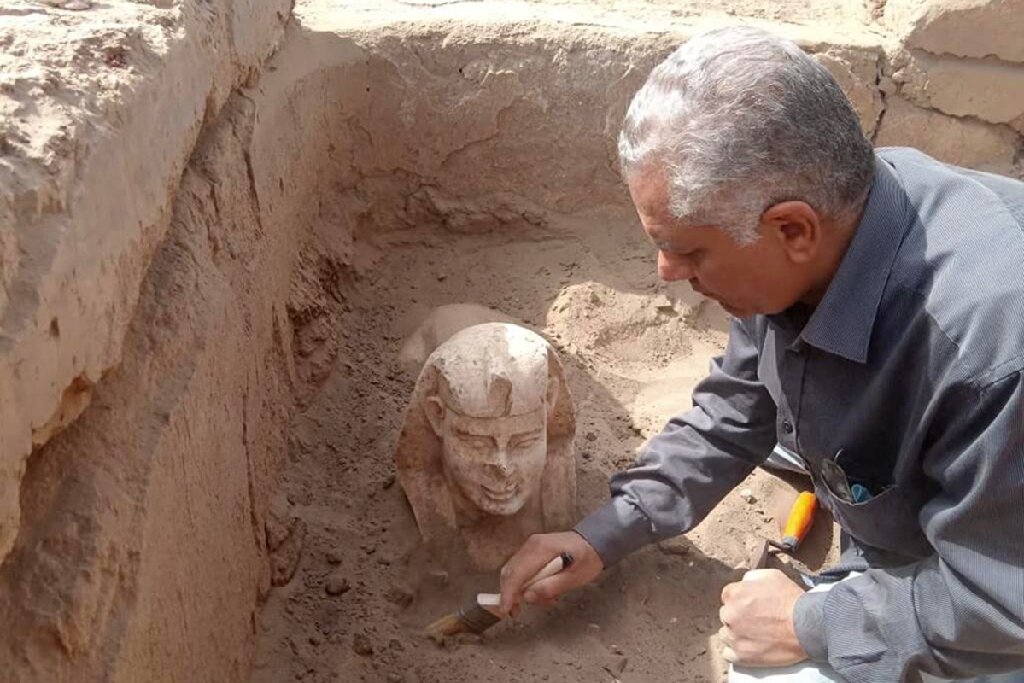A unique archaeological discovery in Egypt has captured the imagination of researchers and the public alike. Near the famed Hathor Temple, a team unearthed a sphinx statue unlike any other – one adorned with a “smiley face and two dimples.” Announced by the country’s tourism and antiquities ministry, this find adds to a string of recent revelations from ancient Egyptian sites.
The limestone artifact, believed to be a stylized representation of a Roman emperor, was discovered within a two-level tomb. The exquisite craftsmanship of the sphinx is noteworthy, described as “beautifully and accurately carved” by the ministry. Accompanying the sphinx was a “Roman stele,” a stone inscription, written in both demotic and hieroglyphic scripts.
Deciphering these inscriptions may prove crucial in identifying the depicted ruler. The research team speculates it could be Emperor Claudius, but further analysis is needed. The Hathor Temple itself holds historical significance. Located south of Cairo, it was once home to the Dendera Zodiac, a celestial map coveted by many. This artifact was controversially removed from the temple over a century ago and currently resides in the Louvre museum, Paris. Efforts by Egypt to reclaim the Zodiac highlight the ongoing importance of preserving cultural heritage.

The recent surge in archaeological discoveries extends beyond the smiley sphinx. Major finds have been unearthed in Saqqara, a vast necropolis south of Cairo, and Giza, the location of the Great Pyramid, the sole surviving wonder of the ancient world. Just last week, authorities announced the discovery of a hidden passage within the Great Pyramid, raising speculation of its connection to the pharaoh Khufu’s burial chamber.
Further south, Luxor witnessed the unearthing of an “1,800-year-old complete residential city from the Roman era.” While some experts raise questions about the motivations behind these frequent announcements, suggesting a blend of scientific and economic interests, there’s no denying the potential to boost tourism.
Egypt’s tourism industry, a vital sector of the economy, has suffered significantly in recent years. The government aims to attract 30 million tourists annually by 2028, a sharp rise from pre-pandemic levels. Unearthing the country’s rich past plays a crucial role in achieving this goal, attracting visitors eager to witness these remarkable finds.
The discovery of the smiley sphinx, with its intriguing features and historical context, serves as a potent reminder of Egypt’s enduring legacy. It is a testament to the continued efforts to unravel the mysteries of this ancient civilization, while also highlighting the delicate balance between scientific exploration and economic revival.
